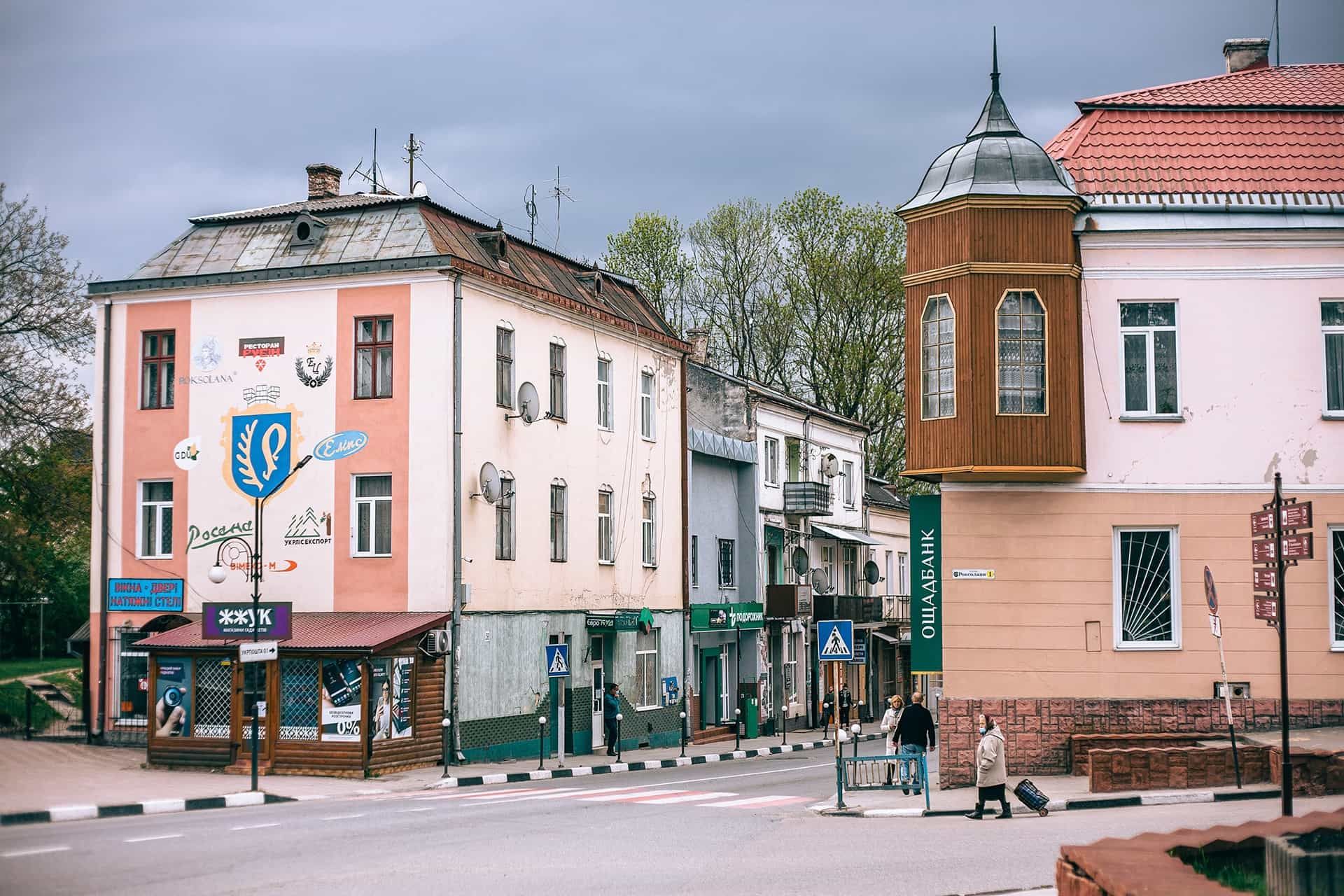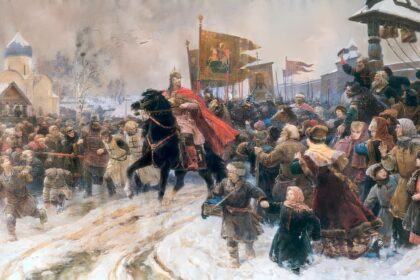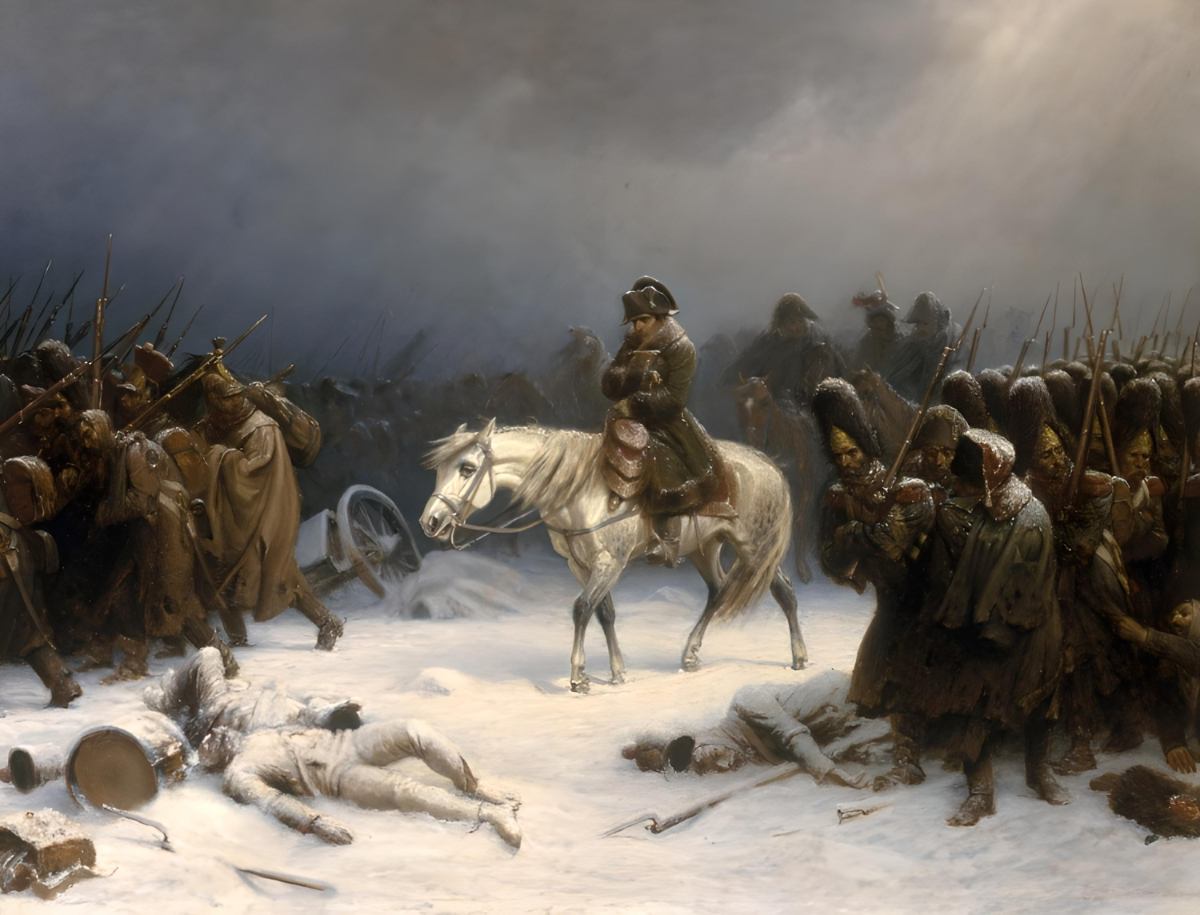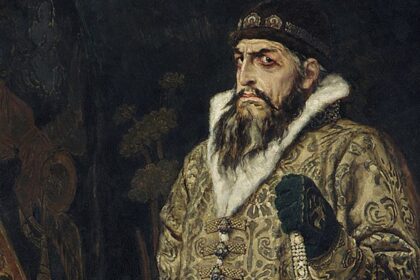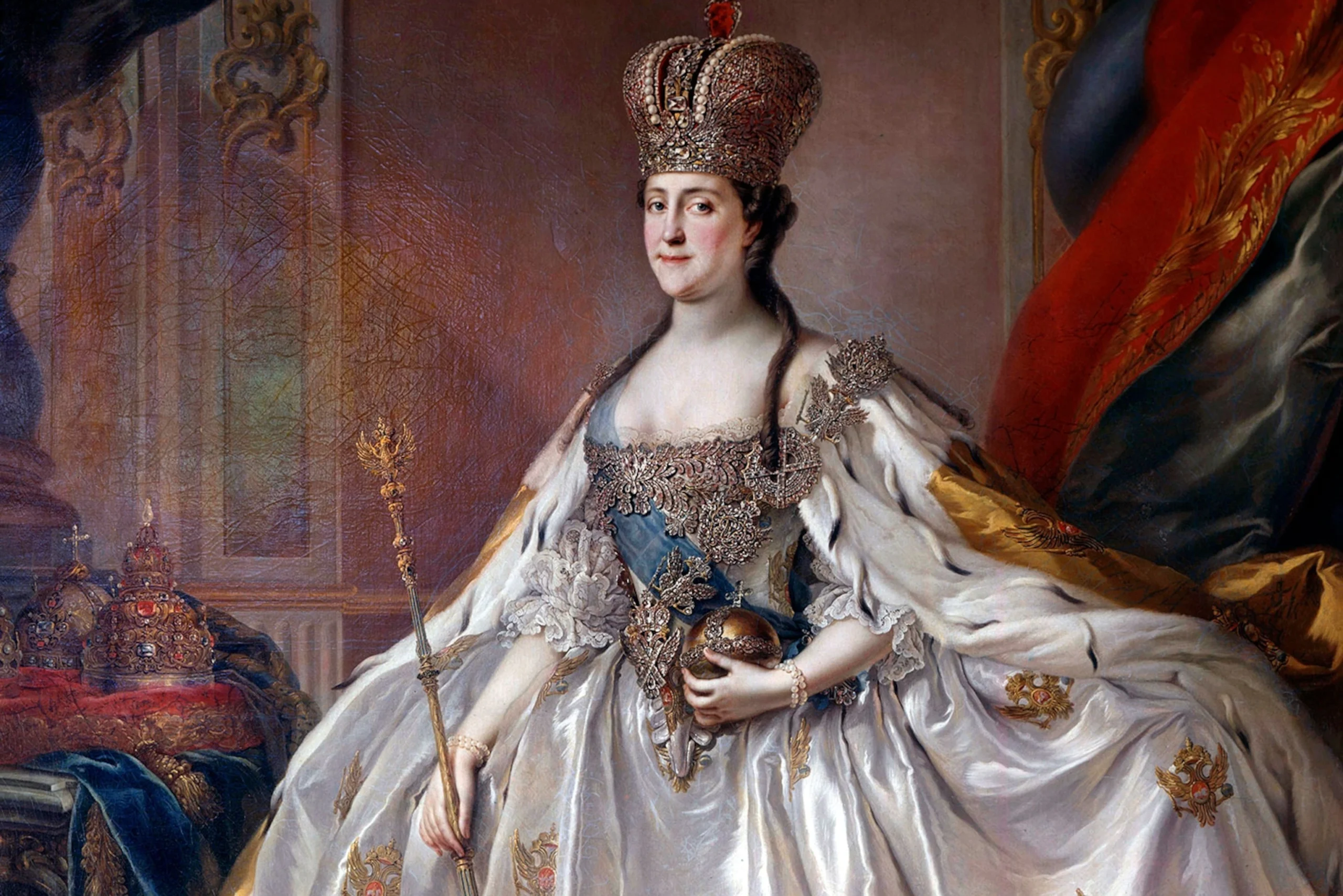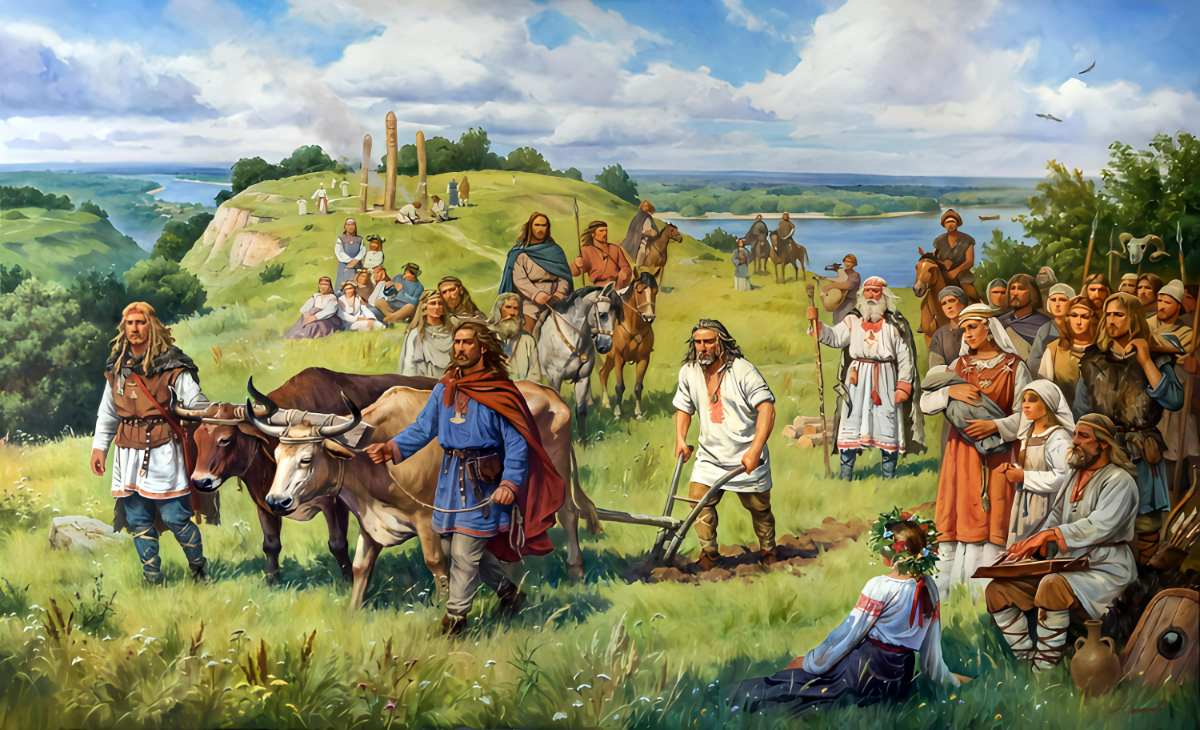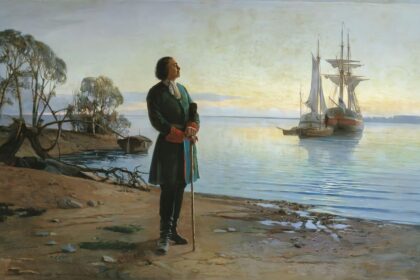Peter the Great Statue at a Glance
What is the Peter the Great Statue, and where is it located?
The Peter the Great Statue is a monument located in Moscow, Russia, commemorating the 300th anniversary of the Russian Navy. The statue is one of the highest monuments in Russia, standing at 322 feet (98 meters) tall. The monument is situated on an artificial island created at the confluence of the Moskva River and the Vodootvodny Canal.
Who designed and constructed the Peter the Great Statue?
Zurab Tsereteli, a Georgian sculptor, was commissioned by the Moscow government to design and construct the Peter the Great Statue in 1997. The statue is a unique engineering achievement, with its bronze features hinged to a stainless-steel framework that holds the monument aloft.
What is the cost of building the Peter the Great Statue?
The estimated cost of building the Peter the Great Statue was 100 billion non-denominated rubles, which is equivalent to almost $16.5 million at the exchange rate in 1997. The design and construction of the structure took less than a year to complete.
What is the history of the Peter the Great Statue?
The aesthetic value of the Peter the Great Statue was assessed by a public commission in 1997, which claimed that the government and Zurab Tsereteli had u0022liedu0022 about the statue being a present to sailors to celebrate the 300th anniversary of the Russian Navy. The monument was dedicated on September 5, 1997, as part of the festivities commemorating Moscow’s 850th anniversary.
What materials were used in the construction of the Peter the Great Statue?
The bronze used in the Peter the Great Statue is top-notch and underwent a rigorous process that included sandblasting, patination, and a coating of wax and varnish designed to withstand the elements. The shrouds of the ship are corrosion-resistant stainless steel, and inside the copper skin of the sails is a spatial metal structure to cut down on weight. The monument’s pedestal consists of a ship and a statue of Peter, built in pieces and then attached to the lowest portion of the monument.
The Peter the Great Statue in Moscow is one of the highest monuments in Russia. The structure itself is 322 feet tall (98 m), while Peter’s statue alone is 59 feet tall (18 m). The Moscow government commissioned Zurab Tsereteli to build a monument to Peter the Great in 1997. Officially titled “Monument in commemoration of the 300th anniversary of the Russian Navy,” the monument is located on an artificial island created at the confluence of the Moskva River and the Vodootvodny Canal.
Well-known for his distaste for Moscow, Peter decided to relocate the country’s capital to St. Petersburg.
Design and Construction of the Peter the Great Statue

The Peter the Great Statue is a one-of-a-kind engineering achievement. The monument’s bronze features are hinged to a stainless-steel framework that holds the monument aloft. The pedestal, which consists of the ship and a statue of Peter, was built in pieces and then attached to the lowest portion of the monument. The completed statue of Peter was directly placed on the pedestal.
The shrouds of the ship are corrosion-resistant stainless steel. They are all locked in place with a complex web of ropes that prevents them from moving at all. Inside the copper skin of the sails is a spatial metal structure to cut down on weight.

The bronze used in the Peter the Great Statue is top-notch, having undergone a rigorous process that included sandblasting, patination, and a coating of wax and varnish designed to withstand the elements. The Saltire symbol on the flags, which are meant to act as a weather vane, and the golden scroll Peter I is personally holding are both gilded objects.
Inside the Peter the Great Statue is a ladder for inspecting the structure. The iron-concrete base, which forms an artificial island on which the monument rests, is surrounded by fountains to give the impression of a ship cutting through the sea.
Creation and Installation of the Monument
There is a Columbus statue in Puerto Rico with a similar style to the Peter the Great Statue, also designed by the Georgian sculptor Zurab Tsereteli. According to a popular claim, on the 500th anniversary of the Europeans’ discovery of the American continent, Tsereteli allegedly presented the Columbus statue to the United States, Spain, and Latin American nations in 1991–1992, but was rejected each time.

Therefore, he redesigned the monument into the Peter the Great Statue of today. However, Tsereteli disputes the veracity of this claim. It is officially estimated that it cost 100 billion non-denominated rubles to set up the monument, which is almost $16.5 million at the exchange rate in 1997.
Design and construction of the structure took less than a year. The aerodynamic qualities of the monument were greatly enhanced in the wind tunnel at Moscow State University’s Institute of Mechanics. The same model statue is housed in the university’s history museum today.
Under the direction of head surveyor Valery Makhanov and head foreman Vladimir Maximov, 120 installers from the company 1st MSMU JSC “Stalmontazh” completed the erection of the Peter the Great Statue.
History of the Peter the Great Statue
The Peter the Great Statue’s aesthetic value was assessed by a public commission in 1997. And a few months before its unveiling, the commission claimed that the government and Zurab Tsereteli had “lied” about the Peter the Great Statue being a present to sailors to celebrate the 300th anniversary of the Russian Navy.

According to the commission, the anniversary was in October of the previous year. Furthermore, in 1995, the sailors had petitioned the Russian government and individually petitioned Prime Minister Viktor Chernomyrdin to have a new monument dedicated to the anniversary in Moscow. The petition had the signature of the acting Navy Commander, Admiral Selivanov. Lev Kerbel, an academician and Soviet artist, had sculpted the statue.
A new pedestrian bridge across the Vodootvodny Canal was constructed, and the embankment was adorned, in preparation for the monument’s September 1996 unveiling in front of Tretyakov. However, Moscow declared to the government in a separate letter that it had undertaken to settle all issues with this monument on its own, without Russia’s assistance.
Special committees were established by the city administration and the city’s previous head architect Leonid Vavakin to look into the plans of Kerbel and Tsereteli, and they concluded that Zurab Konstantinovich Tsereteli’s concepts were beautiful and unique.

On the advice of the Government of Moscow, the city committee tasked with commemorating the Navy’s 300th anniversary visited the Tsereteli studio to learn more about the Peter the Great Statue’s design.
The celebration committee requested that Tsereteli be recommended to make changes to the design, such as depicting Peter the Great in the traditional uniform of an early 18th century Russian sailor, installing busts of outstanding naval commanders inside the monument; removing the eagle from the bowsprit, etc., but these requests were not met.
As part of the festivities commemorating Moscow’s 850th anniversary, the Peter the Great Statue was dedicated on September 5, 1997. Prior to that, on September 3 and 4, respectively, the area surrounding the renovated Cathedral of Christ the Savior and the repaired Stoleshnikov Lane with the temple near the future Marriott Aurora Hotel was revealed by Moscow Mayor Yury Luzhkov and President of Russia Boris Yeltsin.
Criticism Toward the Peter the Great Statue
Architects and the general public both thought the Peter the Great Statue was ugly and pointless. In 1997, “Stolitsa” magazine published a series of articles and organized a petition drive to protest the monument’s planned placement in the city. About 5,000 letters of support were sent to the magazine in response to the request, along with a sticker depicting a defaced memorial to Peter I.
According to an article that “Stolitsa” magazine published after reading and evaluating reader responses, the primary complaints about the Peter the Great Statue were its enormous size and its inappropriate location.
Even though there was a lot of interest in the monument, sociological polling in Moscow by the Public Opinion Foundation (FOM) and VCIOM in May revealed that only half of the city’s residents favored the structure. After reviewing the data, the commission conducted its own vote, with 13 members favoring maintaining the monument in its current location and 3 members opposing it.
Moscow residents were polled on their opinion of the city’s urban planning strategy as part of a large-scale sociological study that was contracted out to non-governmental organizations. Only 15% were in a low mood, 30% were upbeat, and 40% had mixed feelings. Notably, the majority of the people (60%) who were hesitant about Moscow’s urban planning strategy openly despised the Peter the Great Statue.
After taking everything into account, it is found that Peter the Great Statue alone was 30% responsible for the poor reputation of the Moscow administration’s urban planning policies. This is a rare example of how one building can affect a whole metropolis of people.
The Peter the Great Statue is occasionally included in lists of the world’s 10 ugliest monuments. The City Council Building in Boston and the Montparnasse Tower in Paris often come on top of those lists since both seem like they belong in a nuclear bunker.
In an attempt to destroy the monument in July 1997, members of the Revolutionary Military Council planted explosives. They later claimed that the explosion was called off because of the risk of harming innocent bystanders. A different account had it that an anonymous phone call stopped the bomb from going off. From that point, visitors had been turned away from the landmark.
Five members of the “Revolutionary Military Council” were convicted guilty of terrorism and given prison terms by the Moscow City Court in 2002. In April 1997, they were accused of bombing a monument to Nicholas II (sculpted by Vyacheslav Klykov), and in the same month they were suspected of damaging a monument to Peter and a gas distribution station in the Moscow area.
The newspaper “Izvestia” reported that a proposal at the yearly exhibition “Arch Moscow” offered covering the monument in glass so that it would be invisible. In 2007, the architect Boris Bernaskoni displayed his creation at a gallery show. He proposed turning the Peter the Great Statue into a tower that would house a museum dedicated to the work of Zurab Tsereteli as well as provide a vantage point and recreational space for the people of Moscow.
The ART4.RU Museum of Contemporary Art also held an event in 2007 to raise money for the destruction of Tsereteli’s art, with contributions totaling about 100,000 rubles. Fundraising for the removal of all Zurab Tsereteli monuments in the city was advertised on a box left at the exhibition’s entrance.
The director of the museum claimed that more money was raised in contributions than was spent on admissions within a few days. Later, at the request of the sculptor’s grandson and director of the Moscow Museum of Modern Art, Vasili Tsereteli, the name “Zurab Tsereteli” was removed from the text, leaving just the inscription calling for the removal of the monuments.
Following the Moscow Mayor’s Resignation
Gallery owner Marat Gelman, who had previously condemned the Peter the Great Statue, urged its destruction on September 28, 2010—one day before Yuri Luzhkov was dismissed from office as Mayor of Moscow. At a meeting of Moscow’s administration on October 4, 2010, interim mayor Vladimir Resin proposed moving the monument.
According to the head of the Moscow Municipal Duma Commission, moving the Peter the Great Statue would cost the municipal budget 1 billion rubles ($34 million in 2010) and it was doubted that this amount would be found. Gelman said that he would obtain sponsorship money outside of the budget to facilitate the relocation of Zurab Tsereteli’s monument.
Some organizations voiced concern that the proposed relocation of the monument was motivated by populism. Another effort to mislead public opinion by relocating the monument and claiming it solves all issues with Moscow’s image.
Interestingly, St. Petersburg refused to host the statue, unlike many other cities. This is probably because the city already had a Peter I monument commemorated by Tsereteli (at a height of 41 ft; 12.6 m). There was also the already popular Peter the Great monument called “The Bronze Horseman,” erected in 1768–1782.
“Peter the Great Statue has stood and will continue to stand”, Sergey Baidakov, prefect of Moscow’s Central Administrative District, remarked during a news conference in July 2011.
Peter the Great Statue When It Comes to Culture
None of Moscow’s modern monuments has arguably become the symbol of the city. This is because they are neither part of the city’s legend nor the so-called “cultural text.” This includes the Peter the Great Statue.
Some people have seen parallels between St. Petersburg’s monument The Bronze Horseman, and the Peter the Great Statue in Moscow. But other than that, the Peter the Great Statue has never found itself a prominent place in culture. Today, the monument is often remembered as part of the “Peter the Great Statues” in Russia.



